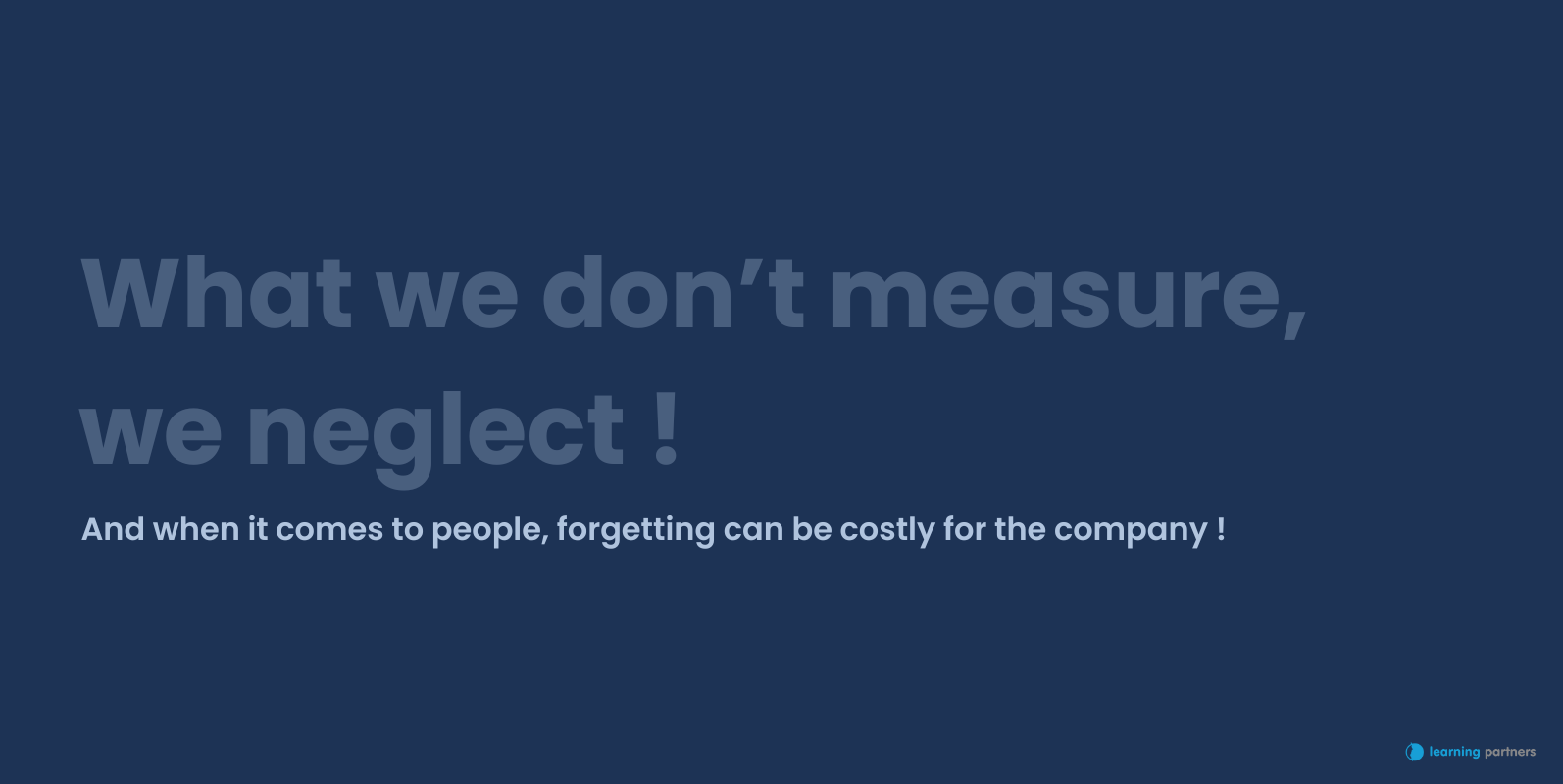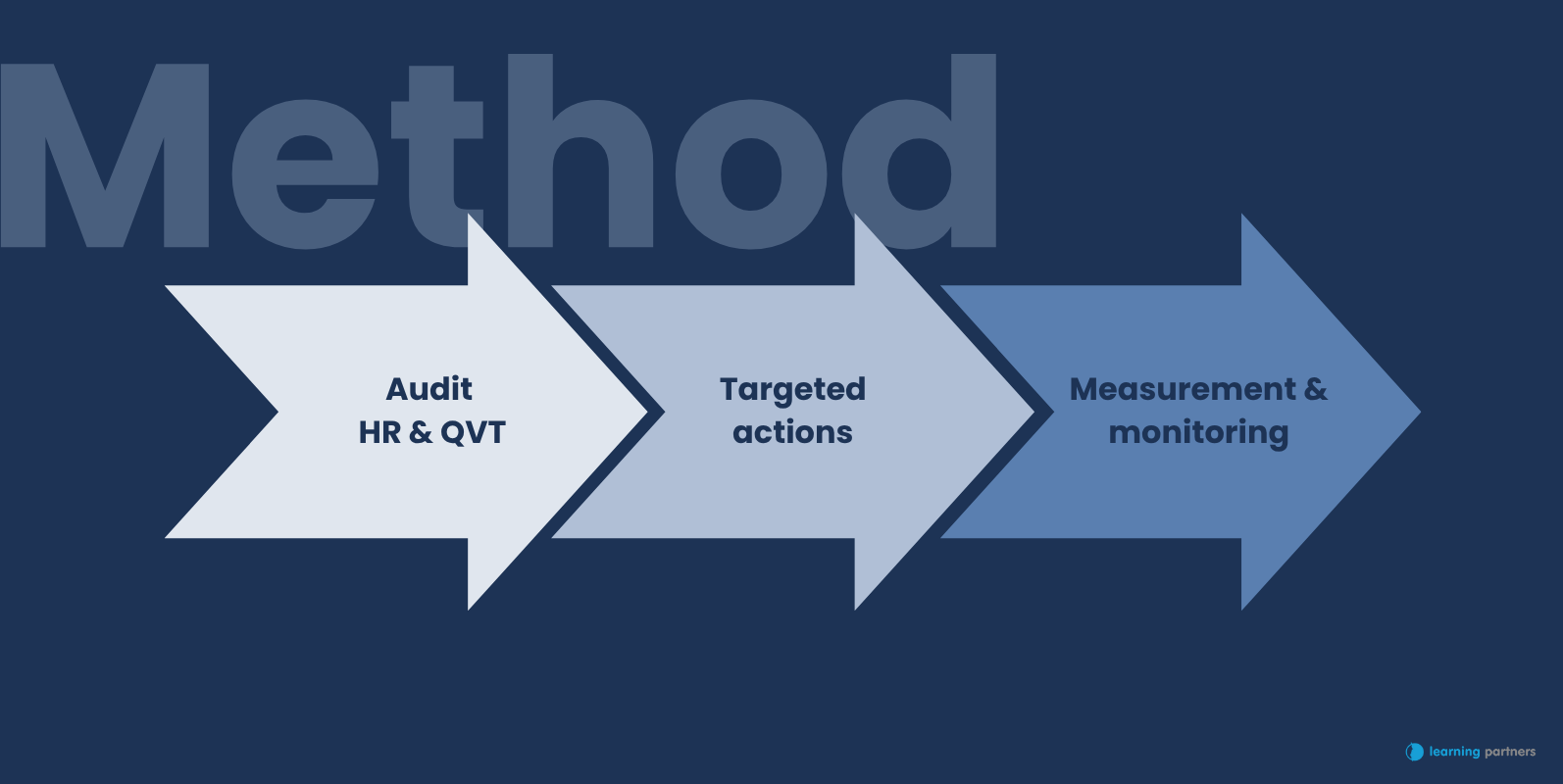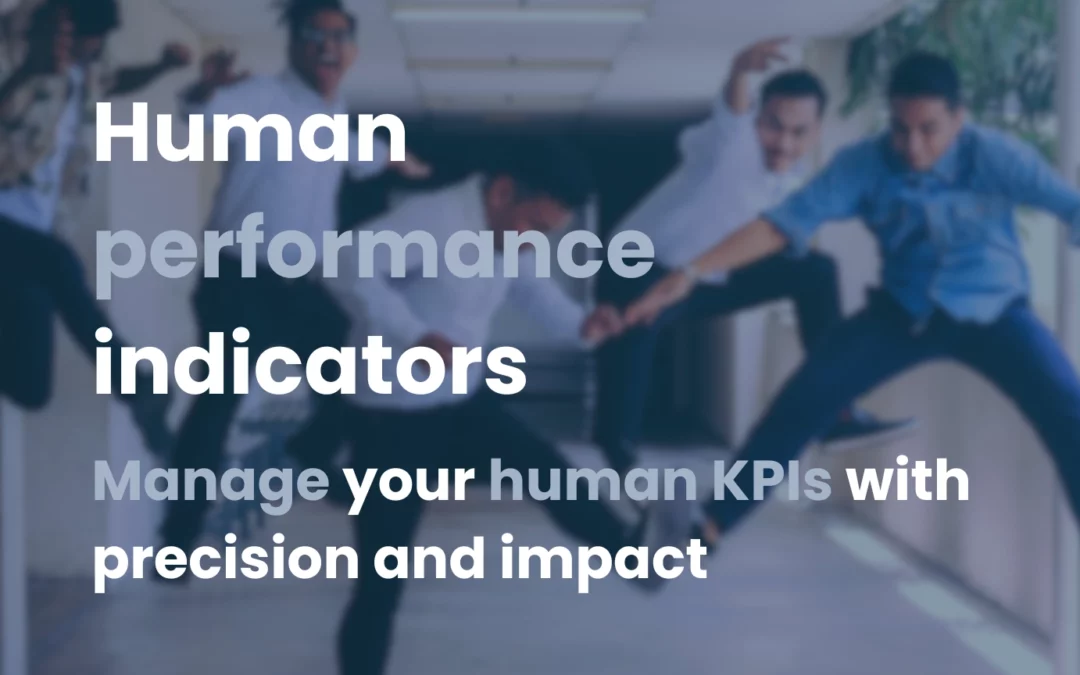Contents
Why measure human performance performance?
Human performance indicators definition and specifics
The main types of indicators of human performance
Case study Analyze a human indicator and define an action plan
How do you build a relevant HR dashboard?
Put at the heart of sustainable performance
Move from indicators to tangible impact with Learing Partners
Why measure human performance in business?
In a context where competitiveness is no longer based solely on financial resources or technological tools, human capital is becoming a key strategic lever.
That’s what we’re going to look at in this article, the different human performance indicators, defining, understanding and interpreting them as drivers of your managerial transformation.
Understanding and managing human performance indicators not only enables us to better manage internal resources, but also to create a sustainable, motivating and efficient working environment. In other words, what we measure influences what we improve: measuring human performance indicators means investing intelligently in collective success.
Human performance indicators: definition and specifics
Transforming managerial practices requires a new reading of performance: more human, more systemic. Human performance indicators enable us to manage differently – by revealing what really makes the difference in teams. How do you define them and use them wisely?
What is a Human Performance Indicator?
A human performance indicator is a KPI (Key Performance Indicator) that quantifies the quality and impact of human resources on the organization. Unlike purely economic KPIs, it integrates intangible dimensions such as commitment, well-being, collaboration and skills development.
How does it differ from a purely financial or commercial KPI?
Whereas a financial indicator measures a numerical result (sales, margin, cost of acquisition…),human performance indicators assess internal dynamics. These indicators are often more complex to measure, as they combine quantitative and qualitative aspects, but their impact on business results is considerable. For example, a low hiring rate can have a direct impact on productivity and staff turnover .
Why are human performance indicators essential to global management?
They offer a comprehensive view of a company’s social health. By integrating them into management dashboards, decision-makers can take more balanced decisions between economic performance and internal climate. They also make it possible to anticipate social risks (burn-out, mass departures, loss of key skills) and steer organizational transformation in a more human way.

The main types of human performance indicators
Human performance cannot be captured by a single figure. It unfolds through several complementary dimensions: commitment, cooperation, learning, well-being… Identifying the right types of indicators means structuring a management approach aligned with the organization’s human realities.
1. Satisfaction and commitment indicators
These KPIs enable us to measure employees’ commitment to their work environment:
- Employee satisfaction Employee satisfaction: via regular internal surveys.
- Employee Net Promoter Score (eNPS) measures the probability that an employee will recommend his or her company.
- Engagement rate level of emotional and cognitive involvement.
- QWL Score (Quality of Life at Work) composite indicators integrating atmosphere, work/life balance, sense of usefulness, stress factors, etc.
2. Loyalty and retention indicators
They reflect the company’s ability to retain talent:
- Turnover rate A key indicator of team stability.
- Average seniority Indicates ability to build loyalty.
- Voluntary/involuntary departure rate To be analyzed to understand the causes.
- Internal mobility rate Internal mobility rate: indicates the existence of real career opportunities.
3. Skills development indicators
They enable the company’s skills capital to be monitored:
- Number of training hours per employee HR investment indicator.
- Training access rate to verify equal access.
- Skills development Skills development: via annual interviews or skills enhancement tests.
- Ratio of skills upgrading to open positions The link between training and internal opportunities.
4. Collective performance indicators
They measure team synergy and cooperation:
- Team objective achievement rate direct indicator of team performance.
- Capacity for inter-departmental cooperation measured by feedback or cross-indicators.
- Team problem-solving Teamwork: using tools such as project retrospectives or assessments.
5. Well-being and social climate indicators
These KPIs assess the quality of the social climate, risk prevention and psychological health:
- Absenteeism rate physical and moral health indicator.
- Social climate index Social climate index: through anonymous surveys.
- Return rate after sick leave This gives an indication of support and recovery.
- HR incidents or internal alerts Weak signals to be analyzed carefully.

Case study: analyze a human indicator and define an action plan
Measuring is good. Acting is better . Analyzing human performance indicators only makes sense if it leads to a concrete action plan, adapted to the context of the team or organization. Here’s an example of how to move from data to decision.
Situation: absenteeism on the rise for 6 months
Interpretation : Initial findings reveal psychological fatigue linked to recent restructuring and a temporary work overload. HR teams have also noted an upsurge in musculoskeletal disorders.
Additional analysis Qualitative interviews with a sample of employees. Absenteeism peaks coincide with the launch of new software, which is poorly supported.
Action plan :
- Launch of an HR and QWL audit.
- Set up a working group to rebalance workloads and streamline tools.
- Managerial support targeted at the most exposed teams.
- Post-intervention monthly absenteeism rate monitored and reassessed in 3 months.

How do you build a relevant HR dashboard?
A good HR dashboard does more than just line up figures: it tells a story, informs decisions and supports managerial transformation. It’s just a question of choosing the right indicators and structuring them in a way that is truly useful for managers. Here are the keys to building a tool that is both readable, relevant and operational.
Choose indicators that are measurable, actionable and comparable
A good HR indicator is understandable, measurable over a defined period, and correlated with a possible action. For example, engagement rates can be influenced by management style or recognition at work.
Combining quantitative and qualitative data
Numbers alone are not enough: the analysis must include qualitative elements derived from interviews, observations or anonymous feedback. It‘ s the intersection of the two that makes for real understanding.
Regularly update and share dashboards
Performance evolves: it’s essential to update human performance indicators at least once a quarter, and to involve stakeholders (managers, HR, top management) in reading them.
Cross-referencing human indicators with economic performance data
It is often at the intersection of human and economic indicators that the most powerful levers emerge. For example, a good social climate promotes customer loyalty, productivity and the reduction of turnover-related costs.
Putting people at the heart of sustainable performance
Managing human performance indicators doesn’t mean humanizing management at the margins. It means putting employees back at the heart of strategic management. In a changing world of work, companies that are able to measure, understand and develop their human capital have a decisive competitive advantage.
Human performance indicators are not gadgets: they are the beacons of sustainable, balanced growth aligned with the deep aspirations of today’s talents.
Move from indicators to tangible impact with Learning Partners
Would you like to go further in analyzing your human indicators and structure an action plan with a strong relational and managerial impact?
At Learning Partners, we work with you to build tailor-made management tools based on the realities of your teams.
Phone
+41 22 510 25 15
+33 6 40 83 53 55
Address
68 Route du Stand,
VD1260 Nyon, Switzerland

